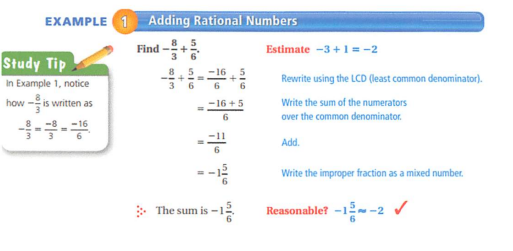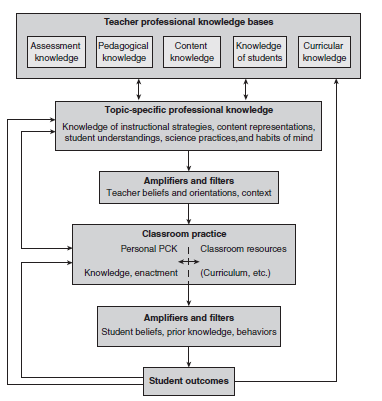PCK and TPCK are two theoretical frameworks that examine the necessary teacher knowledge and skills required to effectively teach a given body of knowledge.”
(ChatGPT, 2023)
A Brief History of Teacher Knowledge Frameworks
In “Those Who Understand: Knowledge Growth in Teaching,” Shulman (1987) presents a condensed history of teaching and how the theory and practice of assessing the fundamental skills and knowledge has evolved. Shulman, an American educational psychologist, educator, and reformer, developed a theory of teaching outlining integrated pedagogical and content knowledge as the precursor to developing an effective teaching practice (Bowman, 2023). He argues that teaching consists of three kinds of teacher knowledge: 1. knowledge of the discipline, 2. knowledge of the practice, and 3. strategic reasoning. He coined the phrase “pedagogical content knowledge” to encapsulate these components that bridge the teacher’s subject matter expertise and students’ educational outcomes.
Through time, Shulman’s Pedagogical Content Knowledge (PCK) framework evolved into a range of derivative models that expanded the PCK framework by including additional knowledge components such as curriculum, instructional strategies, assessment, and teaching orientations (Kind, 2009, as cited in Shulman, 1986). As the 21st century heralds an expanding use of digital technology in teaching and learning, Mishra and Koehler (2006) formulate the Technological Pedagogical Content Knowledge (TPCK) framework to reflect the evolving role of technology and the importance of how technology relates to the pedagogy and content knowledge when it comes to good teaching.
Examining A Teaching Example Using The PCK Framework
Content/Curricular Knowledge – Learning Goal
The learning goal is to understand the concept and process of creating equivalent fractions and adding fractions. This is a re-occurring concept and skill that has been addressed in pre-requisite courses. It is a foundational numeracy skill and critical for working with rational expressions algebraically in future courses.
Pedagogical Knowledge
Equivalent Fractions: Learning is contextualized in the life skill of cooking or eating (there is a lot of quantification around recipe ingredients and pizza/pie). Essential vocabulary is presented and represented in different forms (symbolically, pictorially, verbally) to support the fraction concept. Equivalent fractions are developed and analyzed pictorially and symbolically; patterns are identified and generalized to a mathematical process using direct instruction followed by paired or individual practice.
Adding Fractions: Fraction addition (and later subtraction) is the first operation taught, practiced, and (hopefully) consolidated before multiplication and division. A sample question is procedurally developed and analyzed using the Cornell Notes (https://www.mpsaz.org/shepherd/staff/klkastnerlew/math7notes/files/adding_fractions.pdf) method for math as a scaffolding strategy as illustrated in Fig. 1. This scaffolding strategy is repeated with all four operations as they unfold in class.

Contextual Knowledge
Learners are expected to have this background, as reflected by a placement test or pre-requisite course completion; therefore, this goal is approached as an exercise in review, clarification, reinforcement, consolidation, and application activity. However, learner skills can vary widely; thus, the LMS course shell contains supplemental materials for further instruction and practice, such as videos, worksheets, and online games, through the LMS course shell. Many learners are English Language Learners (ELL), and vocabulary can be a barrier. Learners also have access to learning coaches and tutors, and this resource provides individualized one-on-one courses and general learning support. Although there are other instructional methods to consider, this approach addresses time constraints (less than one entire period) and the learners’ appreciation for concise, direct instruction when dealing with review topics.
Assessment
This lesson involves formative assessment. As the teacher, I assess formatively during strategically integrated class discussions and student practice. Students self-assess throughout the lesson practice using the solution key and peer support.
Technology
Technological tools integrated within the lesson are primarily those employed by the instructor for lesson delivery (OneNote and MS Teams for hybrid deliveries). Later, students can use technology to access any supplemental materials. Given that technology is an optional support, not a key strategy in the learning design, I would position this lesson in the PCK framework, not the TPACK framework. My lesson analysis shows evidence of all five teacher knowledge components as outlined in the consensus model of PCK as described by Kind (2015) in Fig. 2.

References:
Bowman, C. (2023, January 1). Lee S. Shulman. Britannica. Retrieved February 13, 2023, from https://www.britannica.com/biography/Lee-S-Shulman
ChatGPT. (2023). How is PCK different from TPCK? ChatGPT. Retrieved February 13, 2023, from https://chat.openai.com
Kind, V. (2009). Pedagogical content knowledge in science education: Perspectives and potential for progress. Studies in Science Education, 45(2), 169–204.
Kind, V. (2015). On the beauty of knowing then not knowing. In Re-examining pedagogical content knowledge in science education (pp. 178-195).
Mesa Public Schools. (n.d.) Adding fractions. Mesa Public Schools. Retrieved February 14, 2023 from https://www.mpsaz.org
Mishra, P., and Koehler, M. (2006). Technological pedagogical content knowledge: A framework for teacher knowledge. The Teachers College Record, 108(6), 1017-1054.
Shulman, L.S. (1986). Those who understand: Knowledge growth in teaching. Educational Researcher, 15(2), 4 -14.
